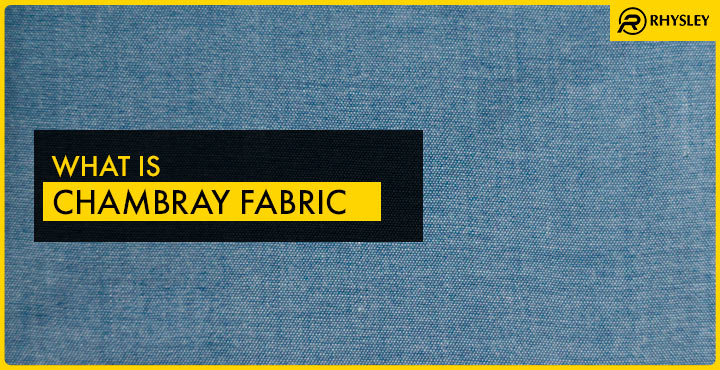
What is Chambray Fabric
Chambray fabric often looks like denim, but it’s a different kind of cloth. The weave, feel, and finish tell a different story. In fashion, this fabric has earned a place in warm-weather wear, work shirts, and everyday outfits.
This guide explains what chambray fabric is, how it’s made, and where it’s used. It also answers common questions about its feel, care, and how it compares to denim.
What is Chambray Fabric?
Chambray fabric definition begins with its weave. It’s a plain-weave cotton fabric where the warp (vertical) thread is usually dyed, and the weft (horizontal) thread stays white. This style gives chambray its faded, two-tone appearance.
Chambray first showed up in the 1500s in Cambrai, a city in France. Its lightweight structure and soft texture made it useful for workwear and later, fashion.
What is chambray fabric made of? Most chambray is made from 100% cotton. Some variations may include small amounts of linen or polyester to change the feel or reduce wrinkling. The core ingredient stays natural, which helps the fabric remain breathable and soft to touch.
How is chambray fabric made? The method uses a one-over-one-under weave, which makes the fabric smoother than denim’s twill weave. Cotton remains the most common fiber, though sometimes a small amount of polyester gets blended in to help with durability.
Chambray Fabric vs Denim
Though they look similar at first glance, chambray and denim are not the same. Denim uses a twill weave, forming diagonal lines on the fabric. Chambray’s weave is plain and tighter, giving it a flatter and softer surface.
This leads to noticeable changes in weight and texture. Denim feels heavier and stiffer, better suited for jeans and jackets. Chambray is thinner and softer, ideal for shirts and light dresses.
Chambray fabric vs denim comparison comes down to comfort and use. Chambray fits everyday wear, especially in warmer months. Denim provides more structure and warmth for heavy-duty clothing.
Read More : What is Pima Cotton Fabric?
Characteristics of Chambray Fabric
Chambray fabric characteristics make it different from many other fabrics. It feels soft, breathes well, and usually drapes nicely over the body. Though it may feel light, it doesn’t lose strength easily.
Is chambray fabric breathable? Yes, cotton fibers let air pass through, helping the body stay cool. That’s one reason people like Chambray fabric for summer clothing. It stays light without being see-through.
Its smooth finish also feels comfortable on the skin. Over time, it gets softer with washing. This adds to its appeal in casual and office-style outfits.
Uses of Chambray Fabric in Fashion
Chambray fabric uses include dresses, button-down shirts, skirts, and even light trousers. Its versatility supports different outfit styles, from casual to polished.
Some designers prefer lightweight chambray fabric for shirts, since it holds color well and feels great against the skin. The weave makes it easy to sew, and the look suits both solid tones and patterns.
This cloth fits well in warm climates. Chambray fabric for summer clothing works because of its cool feel and light weight. While it looks like denim, it doesn’t trap heat, which makes it a favorite for spring and summer wardrobes.
Caring for Chambray Fabric
To clean chambray, gentle machine washing with cold water works well. Harsh heat can fade the dye or shrink the material. It’s best to avoid strong bleach and high-temperature dryers.
How to care for chambray fabric also means checking for wrinkling. Chambray can wrinkle more than synthetic blends, but less than linen. A warm iron or a gentle steam usually smooths it out.
If stored folded, creases can form, so hanging is a better option. Spot cleaning helps extend the time between washes.
FAQs
How is chambray different from denim?
Chambray uses a plain weave; denim uses a twill weave. Chambray feels softer and lighter. Denim is heavier and more rugged.
What is chambray fabric used for?
Common items include shirts, skirts, dresses, and casual wear. It works well for both style and comfort.
Is chambray fabric suitable for summer?
Yes, its breathability and light weight help keep the body cool in warm weather.
Does chambray wrinkle easily?
It wrinkles more than synthetics but less than linen. Ironing or steaming solves this quickly.